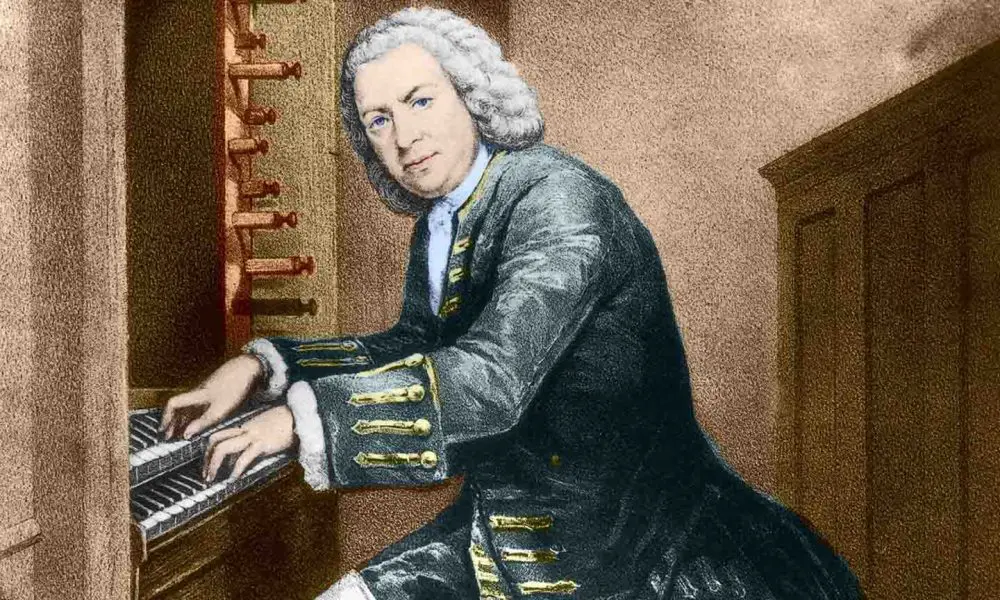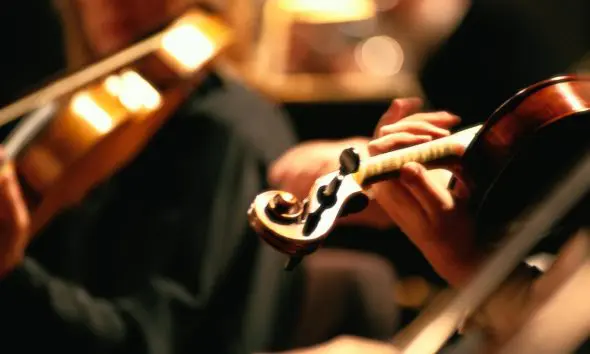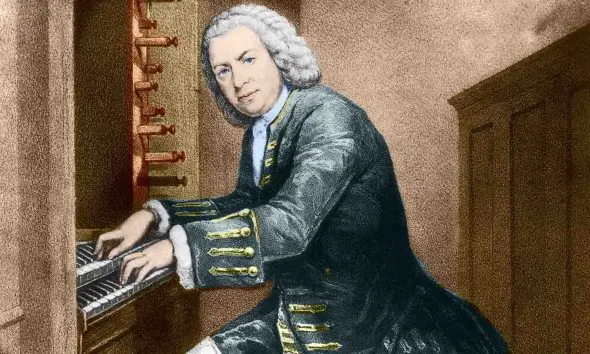Bach’s Monumental ‘Goldberg Variations’: Masterpiece Guide
Explore our masterpiece guide to Bach’s ‘Goldberg Variations’ featuring Lang Lang’s studio and live recordings of the monumental work.

It consists of 30 variations on one aria, it lasts over an hour without a break, and it’s hundreds of years old. It’s also one of the biggest challenges available to pianists and harpsichordists. Does this piece sound likely to enjoy an unstoppable surge of popularity? You’d better believe it, because Johann Sebastian Bach’s keyboard marathon known as the Goldberg Variations has never been more often heard and loved than it is today.
Listen to our recommended recording of Bach’s Goldberg Variations, performed by Lang Lang, on Apple Music and Spotify and scroll down to explore our masterpiece guide to the monumental work.
Bach’s Monumental ‘Goldberg Variations’: Masterpiece Guide
Legend suggests that it was created for the Russian ambassador to the court of Dresden, Count Hermann Carl Keyserlingk, who complained of insomnia and desired music of “such a soft and somewhat lively character that he might be a little cheered up by [it] in his sleepless nights”. The Variations were to be performed by a gifted young harpsichordist in his employ, Johann Gottlieb Goldberg. The Count was so delighted with the result that he gave Bach a golden goblet filled with 100 Louis d’or.
Appealing as the tale is (we can thank Bach’s first biographer, Johann Nikolaus Forkel, for it), it’s probably apocryphal: the variations carried no dedication to the Count when published, and no matching goblet was found in Bach’s estate. Instead, when it was first published in 1741 as the fourth and final part of Bach’s Clavier-Übung (Keyboard Practice), the composer stated merely that the music was “prepared for the soul’s delight of lovers of music”.
As for Goldberg, at that time he was a young teenager. If he did perform the piece, he must have been exceptionally talented, for Bach knew how to make a harpsichordist sweat. The variations require virtuoso playing with infallible coordination, especially as the hands frequently cross over each other. On a two-manual harpsichord the performer can tackle these passages with one hand on each keyboard, which allows each arm enough space to move unimpeded. For today’s modern pianists, though, the demands are even more extreme: using a single keyboard, any performer who has not carefully choreographed these crossings risks a disaster resembling tangled knitting.
The basis for ‘the Goldbergs’ is an ‘Aria’ in G major
The basis for ‘the Goldbergs’ is an ‘Aria’ in G major, effectively a sarabande in binary form (a piece in two halves, each repeated). Bach homes in on the harmonic structure. This remains constant all the way through the variations, suitably adapted for the three in the minor key.
That means the work is a super-sized take on the idea of a Passacaglia or Chaconne. These popular baroque structures, each involving successive variations over a fixed bass-line, did not usually extend to an entire binary-form piece, so forerunners are few and far between. One possible example is Handel’s Chaconne in G major with 62 Variations (1733): its eight-bar bass-line is identical to the first eight bars of Bach’s ‘Aria’. It’s possible that the Goldberg Variations was a snook-cocking “Anything you can do, I can do better” response to Bach’s famous contemporary.
But among his own compositions, the closest example is the Chaconne from the solo violin Partita No.2 in D minor (1717-1720), which consists of continuous variations on an eight-bar harmonic pattern. It makes such a powerful emotional impact that it easily stands alongside the Goldbergs – and the harmonic pattern in both works is stated 32 times.
The work consists of 32 movements on a bass-line of 32 bars
This matters, because to organize pace, energy, and logic over such a lengthy span, Bach creates in the Goldbergs several structural devices that reflect his fascination with mathematical principles, or even numerology. The work consists of 32 movements on a bass-line of 32 bars, as if the microcosm reflects the macrocosm. The whole divides into two halves: variation 15, the halfway point, is the first of the three minor numbers, ending with the hands drifting further and further apart. ‘Variation 16’ is a new beginning: a spectacular French Overture filled with grand French-style double-dotted rhythms and florid embellishments, the second section an up-tempo contrast.
Within that larger structure, the variations are grouped in threes. Every third one is a canon (like a ‘round’), its imitative voices set at a progressively wider interval each time: variation 3 is a canon on the unison, no. 6 with the distance of a second, and so forth, until no. 27 reaches a ninth. Alongside these in each group of three, Bach places a free-form piece, often dance-like or in a ‘genre’, such as a Gigue (no. 7) or a Fughetta (no. 10); and a toccata, a chance for virtuoso display aplenty. These groupings may have extra numerological significance, since the number three often symbolizes the Holy Trinity.
The work’s fount of symbolism is unlikely to stop there. Such matters were common practice within Baroque paintings; music, too, could often be “read” by audiences of the day, drawing on references from ancient classical worlds or the Bible that would have been standard for many well-educated listeners, but which fewer of us today are lucky enough to share. For instance, one academic theory published about 20 years ago explored the striking notion that the Goldberg Variations might be an allegory of ascent through the nine dimensions of Ptolomeic cosmology, from the Earth to the Fixed Stars, each free-form variation symbolizing a planetary stage in the journey. The lyrical no. 13 would represent Venus, the planet of the goddess of love; no. 25, often called the “Black Pearl”, would be Saturn, full of dissonances that intimate pain, death, and mourning; and in no. 29, the Fixed Stars twinkle high over a shimmering background of trills.
Perhaps, it seems to suggest, making music together with family and friends is the best thing of all
At the work’s culmination, instead of a final canon, Bach writes a ‘quodlibet’ – a tradition in which a group of participants improvise by singing several popular songs simultaneously. The plentiful members of the Bach family often used to enjoy such games together. Bach uses two tunes, both distinctly earthy: ‘Kraut und Ruben haben mich vertrieben’ (Cabbage and beets have driven me away) and ‘Ich bin so lang nicht bei dir gewest’ (I’ve been so long away from you …) Perhaps, it seems to suggest, making music together with family and friends is the best thing of all.
At last, after we’ve taken in what feels like a panoply of life experience, the ‘Aria’ returns – yet our experience of it is transformed by the context. It’s as if, to quote TS Eliot’s ‘Little Gidding’ (from the Four Quartets):
“…the end of all our exploring
Will be to arrive where we started
And know the place for the first time.”
Everyone will read something different into Bach’s Goldberg Variations
Ultimately, everyone will read something different into Bach’s Goldberg Variations. We can plumb it for its philosophies or simply enjoy its flood of inspiration. We can observe every detail of historical exactitude, or decide that there is no limit to its possibilities. Whatever the outlook, perhaps there’s room enough in this cosmos for it all.
Recommended recording
Lang Lang realized a lifelong dream by recording Bach’s monumental Goldberg Variations. He released two complementary performances: a studio recording and a live performance recorded at the Thomaskirche in Leipzig, where Bach worked and is now buried. The two recordings are featured on the super deluxe and Extended Editions offering fascinating insights into the art of interpretation.
Lang Lang’s recording of Bach’s Goldberg Variations can be bought here.





David Humphreys PhD
September 10, 2020 at 7:45 pm
An excellent introduction. Thank you for including my ‘nine spheres’ hypothesis which was published in the periodical ‘Soundings’ in 1985.
One point: for Var.29 read Var. 28
Maria de Fatima Lima
October 23, 2021 at 2:41 am
Wonderful Pianist Lang Lang, thank you so much.
Your playing too is an ‘ascension’ into other realms of existance.